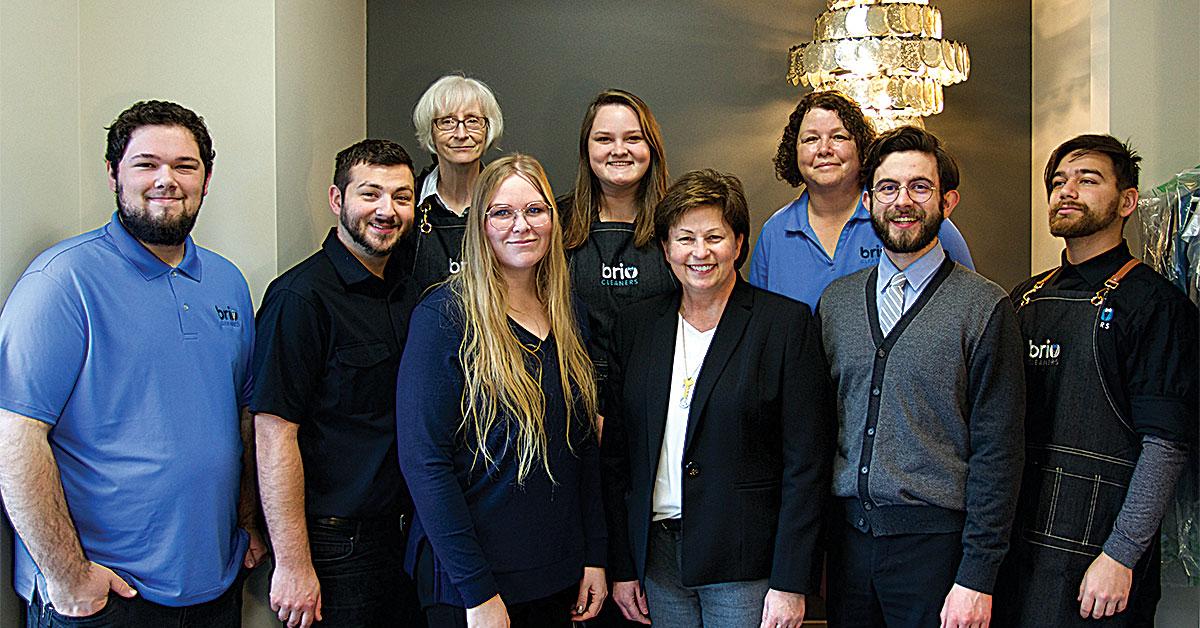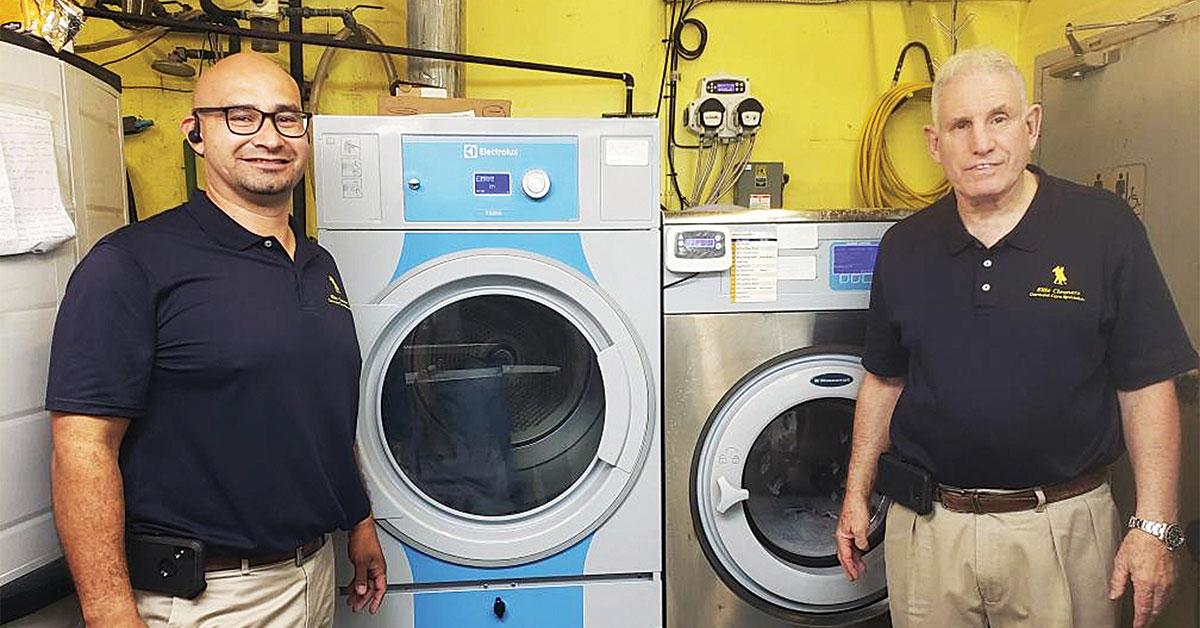CHICAGO — In Part 1, we heard from garment care owners in the midwest and the east coast about wet cleaning, but now let’s hear from operators on the west coast and the southwestern U.S. all about wet cleaning.
BELLINGHAM, WASHINGTON
“Wet cleaning was the only option for me.”
That’s Colleen Unema, owner of Brio Cleaners, in Bellingham, Wash. She’s a former teacher of high school and college biology, environmental science and chemistry for over 20 years. She started Brio Laundry in 2013 and then opened Brio Cleaners just last year with this goal: “We aim to take our place as a neighborhood cleaners with a large reach.”
She says she created Brio Cleaners to be, “unlike any other in my market area. This is on purpose. It’s an old adage from my teaching days: If you do the same thing over and over, you should expect the same results. Those ‘same results,’ were not an option.”
In deciding to open her wetcleaning-only operation, she explains: “I simply could not find a toxin-free dry cleaner near me; I mean a truly petrol chemical-free cleaners. My customers are savvy and know they want all-natural next to their skin. So do I.”
Unema tells her story: “The decline of the neighborhood dry cleaner is well known. I would not build a new enterprise on an old model that is not meeting customer needs now or in the future. I met dry cleaners from around the nation at laundry conventions and workshops who were ‘shaking it up,’ and experiencing success and growth. I listened to them and am following their lead.”
She relates that for her new business, she opted for the latest technology, and for her that was wet cleaning; and while she can’t compare wet to dry, Unema speaks to the benefits of wet:
“I have only ever offered wet cleaning. What is very satisfying is that we can offer a truly fine result and my solvent is just water. No air monitoring or specialized spill kits.
“Of course it is the whole shebang: textile sorting and pretreatment is critical no matter what form of cleaning you use, the process of wet cleaning itself requires specialized machines and formulations of soap. Then we are just like any other dry cleaner in the finishing,” she says.
“I do think there are traditional drycleaning operators who think it is just putting washing machines in the back, throwing in some comforters and calling it wet cleaning. We do everything from sweaters and beaded dresses to suits and ties,” Unema explains.
She offers this wetcleaning tip: “I would say, if an operator is ‘adding’ wet cleaning as an alternative to their solvent-based cleaning, they need to give it an equal playing field in their marketing; plenty of employee training; and plenty of time to really develop the loyal customer. It could turn out to be that edge to get a regular customer to come in more often with items that, ‘can now be wet cleaned.’”
Unema shares this thought for owners reading right now: “It’s like a breath of fresh air to step out of the norm and tackle an age-old problem of ‘dry clean only’ with a brand new solution that doesn’t have any negative environmental or health effects. People love to be loyal. I think wet cleaning is a great way to create a loyal repeat customer base,” she says.
And last she shares an amusing notion:
“The truisms of drycleaning customers apply just as much to a wet cleaner, such as: ‘My dog or cat slept on my suit coat!’ or ‘I have only worn this once and it has all these spots, can you help?’ Or even, ‘My son needs this suit for an interview — in three hours!’ ….Okay, there is a lot wrong with that last one…. c’mon mom, he’s a big boy, he can take his own suit to the cleaners! Of course, we at Brio Cleaners are trying to ‘re-train’ the 20-somethings to the idea that using a cleaners is part of the new ‘adulting’ movement!”
PHOENIX, ARIZONA
“Our washers go all day long nonstop. We are fabricare specialists not dry cleaners.”
That’s David Meyer, president and owner of Phoenix-based Elite Cleaners, a store with 24 employees specializing in processing name brand clothing at moderate prices.
Opened in 2008, he says, “We started wet cleaning immediately. We try to avoid using the word washing and promote using the term wet cleaning. Customers can wash clothing at home but they can’t wet clean.”
He describes his equipment: “We have two 55-pound Unimac washers, two home washers and dryers, one front loader and one top loader, and a 65-pound Wascomat relative humidity dryer. Also a 25-pound Wascomat wetcleaning machine mated with a 35-pound Wascomat relative humidity dryer.”
Meyer points out that his operation has, “Educated our customers that wet cleaning uses high grade detergents. Wet cleaning uses water. It uses lower agitation and lower temperatures than washing.”
He notes that they have grown their poundage because customers, “Bring us their ‘Do Not Dry Clean’ garments.
“Customers trust us to process their clothing in the best way possible. We use three Hi-Steam tensioning units to help finish wet-cleaned garments. A Sam, Pam and a tensioning suzy.”
Starting his career in 1981 in New York City, Meyer owned a cleaners in Queens, and then branched out to owning stores in Ardsley, N.Y. and Stamford, Conn. He later was a Caled Chemical salesman before buying Elite Cleaners in Phoenix.
“We have had many customers allow us to wet-clean high-end formal dresses and they were totally surprised that we were able to restore garments that they thought were ruined,” he relates.
Meyer notes that they wet clean baseball hats that customers loved and were afraid to have them cleaned. “They are always amazed.”
He indicates that his fabricare operation currently wet cleans about 40% of their work. “If you add in the shirt laundry, it is about 60%,” he adds. “I think wet cleaning will go up another 10 to 20%.”
Meyer has a few tips for those first starting in wet cleaning: “I suggest starting out with home washers and find the best wetcleaning detergents. As you progress, you should buy dedicated wetcleaning machines. Don’t forget bleaching. We soak garments with amazing success. Again, start off slow and gradually learn by trying.”
He says they use two vendors: “Pariser for most of our work. Kreussler is used primarily to wet clean ‘dry clean only’ garments.”
For beginners, he caution that you will damage a few items but it is part of the learning curve.
Most importantly, he relates, is to ask for help.
“Find another cleaner that can help you in a jam. Call before starting on a risky garment. Contact your soap salesman regularly. I also call A.L. Wilson reps for help before starting a difficult project,” and he reminds, “contact DLI or NCA for help when necessary.”
To summarize, Meyer says, “Trial and error will help you to become a full-fledged garment care specialist!”
There we have the opinions of four owners from all parts of the U.S. sharing their thoughts and experiences with wet cleaning!
To read Part 1, go HERE.
Have a question or comment? E-mail our editor Dave Davis at [email protected].


